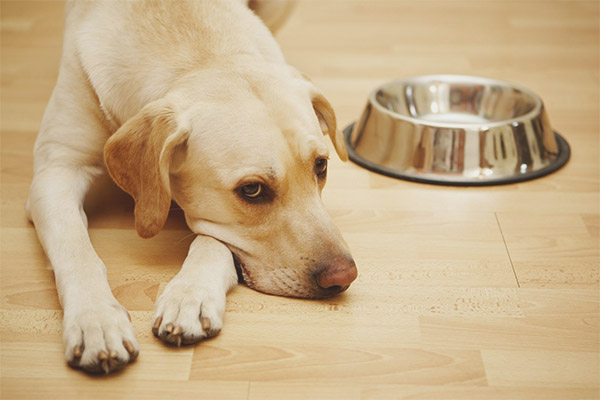The content of the article
A pet food allergy causes reddening of the skin and itching in about one in five cases. It can appear with the same probability and frequency in animals of different sexes, subjected to castration or not subjected to this procedure.
Fact! An allergic reaction occurs most often in pets, whose age is in the range of 5 months and up to 12 years.
Most often dogs have problems with contact and aerogenic (fragments of dirt and pollen present in the air) form of allergy. There is no connection between what a breed of animal is and how it reacts to certain foods.
It is also required to distinguish between food-type allergies and the likelihood of food intolerance.Food allergies have specific manifestations of scabies, rashes and other skin problems.
With regards to the intolerance of any food, this malaise turns into diarrhea or vomiting, but does not manifest itself as a standard allergic reaction. Intolerance is more comparable with gastrointestinal disorders in people who ate spicy, fatty, or fried foods.
What if pet has food allergies
Initially, it is important to note: it makes no sense to engage in therapy of allergy to dog food. It will only be necessary to ensure the elimination from the diet of those products that contain an allergen, and all manifestations of the disease will instantly disappear. The immunity of the dog's body will return to normal, and the ailments will disappear as a nightmare.
But in order to do this, it is necessary to determine the source of the allergen.
Products that are under suspicion
According to certain studies, a number of ingredients and foods are much more likely, in contrast to others, to turn into food allergies.The most common allergens that may be present in dog food are:
- beef meat;
- milk, cottage cheese, cheese;
- chicken meat;
- mutton;
- fish products;
- wheat;
- chicken eggs;
- corn.
As you can see, often the allergen itself contains the most common ingredients of the finished dry food, and this is hardly a coincidence. Of course, some of the proteins have a stronger allergenicity, but usually they are similar in shape.
Nutritionists are of the opinion that the occurrence of an allergic response to food depends on prolonged use of the same products.
Clinical picture of food allergies
Food-type allergy is symptomatically extremely reminiscent of the usual. First, irritation of the skin on the ears, face, forepaws, armpits and around the perimeter of the anus occurs.
In addition, there are often infections in the ears, acute or chronic, the coat begins to fall, the dog constantly itches, suffers from skin infection and redness of the skin. All the symptoms of food allergies are successfully stopped due to the use of antibacterial drugs, but after the cancellation of the course they reappear.
Research confirms that dogs exposed to food allergy have more frequent stools. It was noted that animals that do not have allergic reactions to food, defecate about 1-2 times during the day, and pets suffering from food allergies - three times more often.
Paying attention only to the physiological manifestations and symptoms of food allergies, it is difficult to differentiate it from other reactions.
The following symptoms often occur:
- Candidiasis, as well as other problems associated with the ears.
- The manifestation of skin diseases in adolescence or adolescence in a dog.
- Also, it can be concluded that there is an allergy to food if the animal suffers from the disease all year round or especially in winter (when the immune system is weakened).
- The pet has a strong irritation of the skin, and hormonal drugs do not bring relief.
- Unpleasant odors from dog hair and skin.
- Soak up some skin.
- In rare cases, gastrointestinal disorders.
How is the diagnosis made?
Diagnosing food allergies is relatively easy.The only problem is that many other diseases can appear externally in the same way, and the dog often suffers from a number of associated diseases.
That is why before making a diagnosis and, especially, the appointment of a course of treatment, it will be necessary to pay attention to the fact that other diseases are promptly identified and eliminated. Common allergies caused by bites of blood-sucking insects, hypersensitivity due to the presence of parasites in the gastrointestinal tract, scabies or candidiasis, infections - all these diseases can be clinically manifested exactly the same as an allergy to feed in dogs.
Diet of an Elimination Character
As soon as any probable causes of the disease have been eliminated, it will be necessary to conduct an experiment using food unusual for the dog. Its essence is to offer your pet a new feed in about the next twelve weeks. Such food must contain those proteins or carbohydrates that the dog has not received before.
The difficulty, which is accompanied by the process of identifying the desired allergen, lies in the fact that food allergies in a pet almost never appear immediately after contact with the allergen.Food allergic reaction is a kind of "cumulative". In other words, for 20-30 days, the animal can eat food that does not suit her, and only then does the food allergy begin to manifest itself. The same can happen in the opposite situation, when the allergen is already excluded from the diet, but the symptoms have not disappeared.
For example, such foods include rabbit meat and rice groats, potatoes and deer meat - there is quite a lot of this kind of dog food. In addition, you can find special dog food, where trace elements are so small in molecular terms that they simply can not turn into allergic manifestations.
You can also offer the animal and homemade food, but it will require strict monitoring of the volume of ingredients. Regardless of which diet is eventually used, the source of protein that is being tested should be transformed into the only pet food in the next three months.
From the diet will need to eliminate:
- various delicacies;
- pig ears;
- plastic toys with a smell;
- any food when the dog is offered medicine;
- rawhide;
- medicines and toothpastes with flavors;
- cow hooves.
In other words, a pet is forbidden to take everything except the food that the owner chose, and water. It is also desirable to transfer other pets, if any, to exactly the same diet. If this is not possible, it will be necessary to assign them another feeding place so that the dog cannot touch the food of others.
When people eat in the house, it is important to take the animal to another room. If she tries a piece of food that has fallen on the floor, or quietly licks a dirty plate, then the experiment will need to start from scratch. When the little kids (if the family has kids) have eaten, it is important to immediately wash their hands and face.
You should not allow your pet to move freely along the street while walking, keep the dog on a leash. It is also recommended to have a notebook, which records the date and the food that the dog could secretly or accidentally eat.
Experts note that 14-21 days after the strict diet was introduced, you can carefully include in the diet fermented milk products in small quantities. It is important to carefully monitor the condition of the pet, and use the most fresh and high-quality products, where there are almost no preservatives and various additives.It is advisable to use something like biokefir and ryazhenka. Then such food will not only beneficially affect the digestive processes, but will also resist allergic intestinal dysbiosis.
Hypoallergenic food

Also one of the good and effective options is the use of dog food, which is hypoallergenic. This kind of food includes nutrients, vitamin complexes and fatty acids, which are necessary to keep the dog healthy. In the list of the main ingredients of such dishes - dry and wet - as usual there is rice, and also lamb meat.
Another convenience is that the transition from the usual food to a hypoallergenic diet can be done without a smooth change in diet. The current feed is simply excluded, and hypoallergenic feed is immediately offered.
Testing time
In previous times, doctors of veterinary medicine offered to use a special diet, the duration of which was equal to three weeks. But recent studies have made it clear that only a quarter of all dogs who are allergic to food, symptoms appear earlier than 21 days.Anyway, almost all animals showed an allergic response within twelve weeks. Therefore, it is important that it is during the three months that the pet follows a diet.
If the pet has become noticeable decrease or even the disappearance of any allergic manifestations, you can return the dog to its usual diet. Such a process is called “provocative testing”, and is of great importance for determining the exact diagnosis.
Lab tests
It should be understood that at present there is no evidence that the blood test allows you to determine with sufficient probability the presence of food allergies. Allergological analyzes of the intradermal type easily allow to diagnose aerogenic allergy,but show low efficiency in cases where the issue affects the diagnosis of food allergies. The only reliable way to determine a dog's food allergy is to use an elimination diet, as described above.
Video: food allergies in cats and dogs











To send